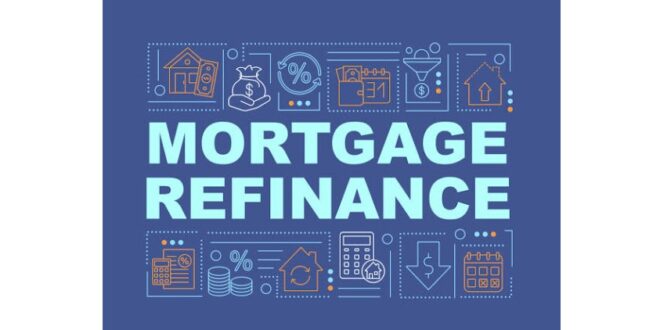Mortgage refinancing a essentially means replacing an existing loan with a new one, whether you change the terms, interest rates, or loan amount. Refinancing can lower your mortgage interest rate, help you get a lower monthly payment, and even shorten your repayment period. Refinancing a mortgage involves replacing your current mortgage with a new loan, ideally with a lower interest rate. Refinancing includes closing costs, which may affect the financial viability of obtaining a new mortgage.
If your current credit score is lower than it was when you got your mortgage, you may have to pay a higher interest rate on your new loan. If you plan to stay home until you pay $200, you can also check the total interest you’ll pay on your old and new loans. Looking at the interest you’ve paid and what you’ll pay on your current mortgage vs. refinance will give you a clear picture of the total cost of the loan for each option. Many online mortgage calculators typically ask for information about $200 (e.g. remaining principal, interest rate, and remaining mortgage term), the new loan you are considering (e.g. principal, interest rate, and term), and your The prepayment or closing fee that will be paid for the loan.
Also read: Rental Property Insurance Tips you Should Know
Estimates From Your Mortgage Lender
Even better, when you get some estimates from your mortgage lender, you can enter the terms they provide into a refinance calculator to help determine which one offers the best deal. You can refinance and renegotiate your current loan with your lender, but it’s still prudent to look closely and ask for credit ratings from several lenders and look at current mortgage rates. You don’t have to refinance with the same mortgage lender that got your first mortgage, and finding a loan is one of the best ways to ensure you get a good deal. Refinancing your mortgage is a good idea in many situations, for example if you have a variable rate mortgage and the lender gives you the option to move to a fixed rate so you can get a predictable loan principal and Interest payments.
Mortgage refinancing requires you to qualify for the loan, just like you had to qualify for the old mortgage. Also, if you’ve paid for private mortgage insurance, refinancing can eliminate those payments if you’ve reached at least 20% home equity in your home. If your new loan is longer than the remaining $200 term, a smaller amount of the upfront payment will go toward the principal, slowing down capital accumulation in your home. Remember that with the refinancing rate and term, the balance of your new loan is equal to what you currently owe on the house and is used to pay off your existing mortgage.
Also read: Pet Insurance and Top 10 Affordable Companies in the USA
Cash refinancing allows you to pay off your existing mortgage to lower your mortgage balance during refinancing negotiations. The interest rate and refinance term allows homeowners to change their existing mortgage rate, loan term, or both. The interest rate and term of the refinance allow the homeowner to obtain a new mortgage with a lower rate and a new term than the previous contract. Refinancing also allows you to choose the rate and loan terms for your new mortgage so you can get a new mortgage that will save you money or help you meet other financial goals.
Refinancing allows you to lower your monthly payments, save on interest over the life of the loan, pay off your mortgage early, and use your assets whenever you need cash for any purpose. In the best cases, refinancing can help you save on your mortgage by negotiating a lower interest rate or a shorter term. You can save money by paying lower monthly fees or paying less interest due to lower mortgage rates or shorter loan terms. For example, adding $50 per month to the principal of the 30-year loan above can shorten the mortgage term by 3 years and save over $27,000 in interest payments.
Your mortgage debt will increase, but since mortgage rates tend to be lower than other loans, this can save you money in the long run. Even if house prices remain the same, if your loan includes negative amortization (unpaid interest is added to the amount you owe when your monthly payment is less than the amount you owe), your Mortgage debt could be more. You originally borrowed it. When you refinance a 30-year mortgage to a 15-year loan, you pay off your loan in half the time. When you refinance, you pay off your existing mortgage and create a new one.
Recommended: Top Travel Insurance Companies in the USA
You can choose the number of years of your home loan (the duration of your loan); you can choose the nature of the interest rate (fixed or variable); and you can also choose what to pay in the closing cost of the mortgage. Some lenders offer “free” refinancing (actually no out-of-pocket expenses for the borrower) by charging a higher interest rate on a new loan than if the borrower financed or paid the closing costs in cash. If you currently have a conventional or ARM loan and are looking to upgrade to a Federal Housing Administration loan, installment refinancing is a fixed-rate loan that allows you to finance up to 100% of the value of a home without mortgage insurance.
The costs associated with mortgage refinancing typically include application, issuance and processing fees, as well as an appraisal of the home’s value, which can affect the size of the new mortgage and the potential amount you can withdraw. Once entered, the Mortgage Refinancing Calculator will calculate your monthly savings, new repayments, and lifetime savings based on the estimated cost of refinancing your home.
